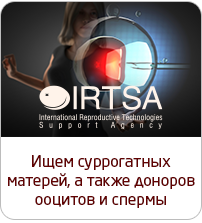Investigators Will Examine DNA Technique
Australian scientists want to find out if using the DNA of three parents will prevent children inheriting life-threatening diseases.
But they say if the technique proves successful in preventing the transfer of mitochondrial DNA mutations from mothers to babies, then laws on the use of embryos will need to be changed to allow the procedure.
About one child a week is born in Australia with such mutations that can affect the way the body converts food into energy, damaging muscle and nerve function and causing organ failure, strokes, and growth and hearing problems.
The proposed technique to prevent this involves transferring a mother's chromosomes into a donor egg that has had its chromosomes removed but has healthy mitochondrial DNA present.
Then, as in normal IVF treatment, the eggs would be fertilised with sperm and the resultant embryo could develop.
A second technique would first allow the father's sperm to fertilise the egg and then transfer the mother's and father's chromosomes to a healthy donor egg.
Professor of the Centre for Reproduction and Development says it is unclear whether researchers can legally test proposed techniques to eliminate a mother's faulty mitochondrial genes.
"We certainly couldn't go out and make new embryos."
But he says it might be possible to test the procedure using eggs that have been arrested in development.
"We think we could use discarded material but that needs to be clarified - whether we can do that and whether the law needs to be changed for that to happen," he told.
The federal government is reviewing the laws relating to the use of embryos in research.
Professor said a few more years of testing and research were needed to determine the safety and effectiveness of the technique.
"We have to make sure we don't do the baby any harm we haven't previously foreseen."
It was imperative for investigation of the technique to proceed and for the Australian law to embrace the technology if it proved successful.
"To introduce that into clinical practice and to make new embryos there would need to be a change in the law.
"I think the Catholic Church would be against it and certain pro-life groups would find that inappropriate," Professor said.
- The central office of IRTSA Ukraine completely restores work
- How we work during the COVID-19 pandemic
- 1st International Congress on Reproductive Law
- Soon Americans may face a new ethical dilemma
- ‘Friends’ star Jennifer Aniston is pregnant with twins
- Image processing technology can impact the success rates of ivf
- Editing genes of human embryos can became the next big thing in genetics
- Supermodel Tyra Banks undergoes IVF
- Scientists discovered a new, safer way for egg freezing
- French scientists have managed to grow human sperm cells in vitro









